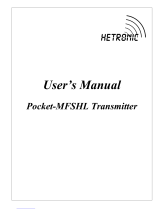
2 Installation and operating instructions, CS 320 FU, Rev. E 1.01 (185581 – EN)
Table of contents
1. Safety information ....................................3
1.1 Correct use .....................................3
1.2 Target groups ..................................3
1.3 General safety advice ............................4
2. Product overview .................................... 4
2.1 Product description .............................4
2.2 Variants ........................................4
2.3 MotherboardCS320FU ..........................5
2.4 Version CS 320 FU-I
Frequency converter incorporated in drive, CS 320
control in separate housing ......................6
2.5 Version CS 320 FU-E
Frequency converter and CS 320 control together
in one housing ..................................6
2.6 Connection of Siemens V20-A / V20-AA frequency
converter ......................................8
2.7 Connection of Siemens V20 frequency converter ...8
2.8 TechnicaldataCS320FU ........................9
2.9 Category and performance level of the safety
function per EN ISO 13849-1 .....................10
3. Installation .......................................... 11
3.1 Safety instructions for installation ............... 11
3.2 Mains connection .............................. 11
3.3 Internal fuse protection .........................13
3.4 Mains voltage selection .........................13
3.5 Supply to external devices
(only with 400 V / 3-phase connection) ............14
3.6 Connection of electronic limit position system
absolute value encoder (AWG) ...................14
3.7 Mechanical limit switch (MEC) connection .........15
3.8 Connection of command devices ................17
3.9 Light grid connection ...........................19
3.10 Connectionofclosingedgeprotectivedevice1 ....20
3.11 Connection light barrier 1 ........................21
3.12 Terminal assignment, relay outputs ..............22
3.13 Connection of programmable inputs .............22
3.14 Safety input per EN 12453 .......................25
3.15 Radio receiver, pluggable .......................26
3.16 CS radio .......................................27
3.17 Digital 991 .....................................27
3.18 Connection of external radio receiver .............28
3.19 Connection of frequency converter ..............28
3.20 Connection of LCD monitor ......................29
3.21 Connection of MS BUS components ..............29
3.22 Transmission system radio ......................30
4. Initialisation ........................................ 30
5. Setting the limit positions ............................31
5.1 Checking the drive / travel direction . . . . . . . . . . . . . . 31
5.2 Setting the mechanical limit switches ............31
5.3 Setting the electronic end position system using
the setting buttons on the circuit board ........... 31
5.4 Setting the electronic limit position system via the
LCD monitor ...................................32
5.5 Setting the intermediate positions of the electronic
limit position system via the LCD monitor .........32
6. Programming ....................................... 33
6.1 Overview of the LCD monitor ....................33
6.2 LCD monitor operating modes ...................33
6.3 Expert menu ...................................34
6.4 RESET ........................................34
6.5 RESETTINGthecontrollerwithLCDmonitor. . . . . . .34
6.6 RESETTINGthecontrollerwithoutLCDmonitor ...35
6.7 RESET the frequency inverter settings ...........35
7. Frequency converter ................................ 36
7.1 General .......................................36
7.2 Adjustable values ..............................36
7.3 Travel diagrams ................................38
7.4 Rated values for motor ..........................39
8. Navigator (only LCD monitor) ........................ 40
9. Functional overviews ............................... 42
9.1 Automatic mode ...............................42
9.2 Input operating mode ...........................43
9.3 Explanations of the relay modes:. . . . . . . . . . . . . . . . .55
9.4 Explanations of the inputs: ......................59
9.5 Diagnosis operating mode / error memory ........62
10. Fault display and remedial measures ................. 65
10.1 Fault display on the LCD monitor .................65
10.2 Error message via LED indicator .................69
11. Service .............................................71
12. Declaration of incorporation (EU) .....................72
13. Declaration of incorporation (UK) .....................73
14. Annex ............................................. 74
14.1 Safety circuit measuring points ..................74
14.2 Overview of the connections ....................76




















